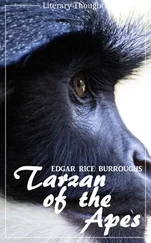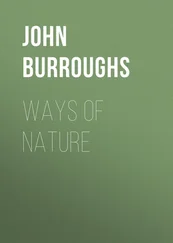John Burroughs - Riverby
Здесь есть возможность читать онлайн «John Burroughs - Riverby» — ознакомительный отрывок электронной книги совершенно бесплатно, а после прочтения отрывка купить полную версию. В некоторых случаях можно слушать аудио, скачать через торрент в формате fb2 и присутствует краткое содержание. Жанр: foreign_antique, foreign_prose, на английском языке. Описание произведения, (предисловие) а так же отзывы посетителей доступны на портале библиотеки ЛибКат.
- Название:Riverby
- Автор:
- Жанр:
- Год:неизвестен
- ISBN:нет данных
- Рейтинг книги:5 / 5. Голосов: 1
-
Избранное:Добавить в избранное
- Отзывы:
-
Ваша оценка:
- 100
- 1
- 2
- 3
- 4
- 5
Riverby: краткое содержание, описание и аннотация
Предлагаем к чтению аннотацию, описание, краткое содержание или предисловие (зависит от того, что написал сам автор книги «Riverby»). Если вы не нашли необходимую информацию о книге — напишите в комментариях, мы постараемся отыскать её.
Riverby — читать онлайн ознакомительный отрывок
Ниже представлен текст книги, разбитый по страницам. Система сохранения места последней прочитанной страницы, позволяет с удобством читать онлайн бесплатно книгу «Riverby», без необходимости каждый раз заново искать на чём Вы остановились. Поставьте закладку, и сможете в любой момент перейти на страницу, на которой закончили чтение.
Интервал:
Закладка:
Our more choice wild flowers, the rarer and finer spirits among them, please us by their individual beauty and charm; others, more coarse and common, delight us by mass and profusion; we regard not the one, but the many, as did Wordsworth his golden daffodils: —
"Ten thousand saw I at a glance
Tossing their heads in sprightly dance."
Of such is the marsh marigold, giving a golden lining to many a dark, marshy place in the leafless April woods, or marking a little watercourse through a greening meadow with a broad line of new gold. One glances up from his walk, and his eye falls upon something like fixed and heaped-up sunshine there beneath the alders, or yonder in the freshening field.
In a measure, the same is true of our wild sunflowers, lighting up many a neglected bushy fence-corner or weedy roadside with their bright, beaming faces. The evening primrose is a coarse, rankly growing plant; but, in late summer, how many an untrimmed bank is painted over by it with the most fresh and delicate canary yellow!
We have one flower which grows in vast multitudes, yet which is exquisitely delicate and beautiful in and of itself: I mean the houstonia, or bluets. In May, in certain parts of the country, I see vast sheets of it; in old, low meadow bottoms that have never known the plow, it covers the ground like a dull bluish or purplish snow which has blown unevenly about. In the mass it is not especially pleasing; it has a faded, indefinite sort of look. Its color is not strong and positive enough to be effective in the mass, yet each single flower is a gem of itself. The color of the common violet is much more firm and pronounced; and how many a grassy bank is made gay with it in the mid-May days! We have a great variety of violets, and they are very capricious as to perfume. The only species which are uniformly fragrant are the tall Canada violet, so common in our northern woods, – white, with a tinge of purple to the under side of its petals, – and the small white violet of the marshy places; yet one summer I came upon a host of the spurred violet in a sunny place in the woods which filled the air with a delicate perfume. A handful of them yielded a perceptible fragrance, but a single flower none that I could detect. The Canada violet very frequently blooms in the fall, and is more fragrant at such times than in its earlier blooming. I must not forget to mention that delicate and lovely flower of May, the fringed polygala. You gather it when you go for the fragrant, showy orchis, – that is, if you are lucky enough to find it. It is rather a shy flower, and is not found in every wood. One day we went up and down through the woods looking for it, – woods of mingled oak, chestnut, pine, and hemlock, – and were about giving it up when suddenly we came upon a gay company of them beside an old wood-road. It was as if a flock of small rose-purple butterflies had alighted there on the ground before us. The whole plant has a singularly fresh and tender aspect. Its foliage is of a slightly purple tinge, and of very delicate texture. Not the least interesting feature about the plant is the concealed fertile flower which it bears on a subterranean shoot, keeping, as it were, one flower for beauty and one for use.
In our walks we note the most showy and beautiful flowers, but not always the most interesting. Who, for instance, pauses to consider that early species of everlasting, commonly called mouse-ear, that grows nearly everywhere by the roadside or about poor fields? It begins to be noticeable in May, its whitish downy appearance, its groups of slender stalks crowned with a corymb of paper-like buds, contrasting it with the fresh green of surrounding grass or weeds. It is a member of a very large family, the Compositæ, and does not attract one by its beauty; but it is interesting because of its many curious traits and habits. For instance, it is diœcious, that is, the two sexes are represented by separate plants; and, what is more curious, these plants are usually found separated from each other in well-defined groups, like the men and women in an old-fashioned country church, – always in groups; here a group of females, there, a few yards away, a group of males. The females may be known by their more slender and graceful appearance, and, as the season advances, by their outstripping the males in growth. Indeed, they become real amazons in comparison with their brothers. The staminate or male plants grow but a few inches high; the heads are round, and have a more dusky or freckled appearance than do the pistillate; and as soon as they have shed their pollen their work is done, they are of no further use, and by the middle of May, or before, their heads droop, their stalks wither, and their general collapse sets in. Then the other sex, or pistillate plants, seem to have taken a new lease of life; they wax strong, they shoot up with the growing grass and keep their heads above it; they are alert and active; they bend in the breeze; their long, tapering flower-heads take on a tinge of color, and life seems full of purpose and enjoyment with them. I have discovered, too, that they are real sun-worshipers; that they turn their faces to the east in the morning, and follow the sun in his course across the sky till they all bend to the west at his going down. On the other hand, their brothers have stood stiff and stupid, and unresponsive to any influence of sky and air, so far as I could see, till they drooped and died.
Another curious thing is that the females seem vastly more numerous, – I should say almost ten times as abundant. You have to hunt for the males; the others you see far off. One season I used every day to pass several groups or circles of females in the grass by the roadside. I noted how they grew and turned their faces sunward. I observed how alert and vigorous they were, and what a purplish tinge came over their mammæ-shaped flower-heads as June approached. I looked for the males; to the east, south, west, none could be found for hundreds of yards. On the north, about two hundred feet away, I found a small colony of meek and lowly males. I wondered by what agency fertilization would take place, – by insects, or by the wind? I suspected it would not take place. No insects seemed to visit the flowers, and the wind surely could not be relied upon to hit the mark so far off, and from such an unlikely corner, too. But by some means the vitalizing dust seemed to have been conveyed. Early in June, the plants began to shed their down, or seed-bearing pappus, still carrying their heads at the top of the grass, so that the breezes could have free access to them, and sow the seeds far and wide.
As the seeds are sown broadcast by the wind, I was at first puzzled to know how the two sexes were kept separate, and always in little communities, till I perceived, what I might have read in the botany, that the plant is perennial and spreads by offsets and runners, like the strawberry. This would of course keep the two kinds in groups by themselves.
Another plant which has interesting ways and is beautiful besides is the adder's-tongue, or yellow erythronium, the earliest of the lilies, and one of the most pleasing. The April sunshine is fairly reflected in its revolute flowers. The lilies have bulbs that sit on or near the top of the ground. The onion is a fair type of the lily in this respect. But here is a lily with the bulb deep in the ground. How it gets there is well worth investigating. The botany says that the bulb is deep in the ground, but offers no explanation. Now it is only the bulbs of the older or flowering plants that are deep in the ground. The bulbs of the young plants are near the top of the ground. The young plants have but one leaf, the older or flowering ones have two. If you happen to be in the woods at the right time in early April, you may see these leaves compactly rolled together, piercing the matted coating of sear leaves that cover the ground like some sharp-pointed instrument. They do not burst their covering or lift it up, but pierce through it like an awl.
Читать дальшеИнтервал:
Закладка:
Похожие книги на «Riverby»
Представляем Вашему вниманию похожие книги на «Riverby» списком для выбора. Мы отобрали схожую по названию и смыслу литературу в надежде предоставить читателям больше вариантов отыскать новые, интересные, ещё непрочитанные произведения.
Обсуждение, отзывы о книге «Riverby» и просто собственные мнения читателей. Оставьте ваши комментарии, напишите, что Вы думаете о произведении, его смысле или главных героях. Укажите что конкретно понравилось, а что нет, и почему Вы так считаете.












